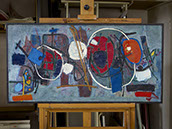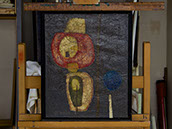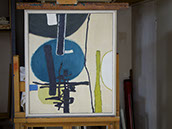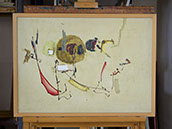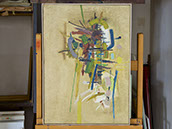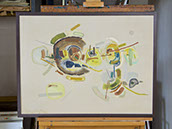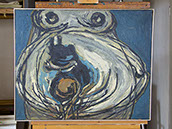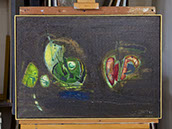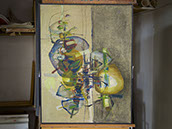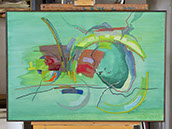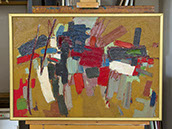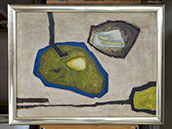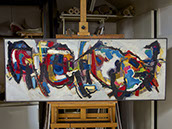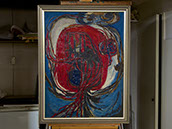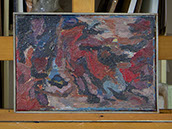In 1955 Jan and his wife An went to live in the almshouse in the Mallemolen in TheHague, where many of the Hague ́s artists had taken up residence . When An turned out to be pregnant , Jan became infatuated with the wonders of their growing new life . For Jan Olyslager the pregnancy of his wife was the beginning of an intense period which inspired him to draw and paint series of embryonic forms where charged colors played a prominent role. The moment he presented his series during an exhibition at the Posthoorn in The Hague, he received different reactions: appreciation, admiration, astonishment, but there were also many that opposed. The painting 'Pregnancy' was refused by the Municipal Purchasing Committee in 1955 because of "objectionable aspects”. Shortly afterwards though, at the instigation of Willem Minderman, the work was purchased by the “Gemeente Museum” in The Hague. With these paintings the first step to acknowledgement and fame became a fact.
Informal
During this period he chose 'the informal' direction in art and thereby took the lead, next to famous celebrities like Hussum, Ouborg and Sinemus, in this new form of painting. Apart from a few visionary minds, this movement was almost unanimously rejected by the The Hague critics. However, this time was crucial for Olyslager's development as it paved the way towards the sovereign validity of the autonomous painting. Painting itself then runs as an automated process with no preconceived plan in which intuition and subconscious play an important role. After the first brushstrokes, the dialogue with the flat surface is created in which Jan is led by a fierce passion that springs from an emotional
state of mind.
De Nieuwe Haagse School (1956 1962) (New The Hague School)
Olyslager was a member of the Posthoorn group that managed to combine the modernfigurative art of Verve with the predominantly nonfigurative art of Fugare. The group was named after the ‘The Hague’s Lange Voorhout’ located bodega ́de Posthoorn ́ where it was widely exhibited in that period. With the founding of The Hague artists groups: ‘Verve’, ‘Fugare’ and the ‘Posthoorngroep’ the postworld war New Hague School became a fact. In retrospect, the New Hague Scholers initiated a major innovation in Dutch painting.
A special retrospective exhibition of this movement was on display in 2003 at the Municipal Museum in The Hague.
CLICK ON PERIODS BELOW TO VIEW MORE WORK



























